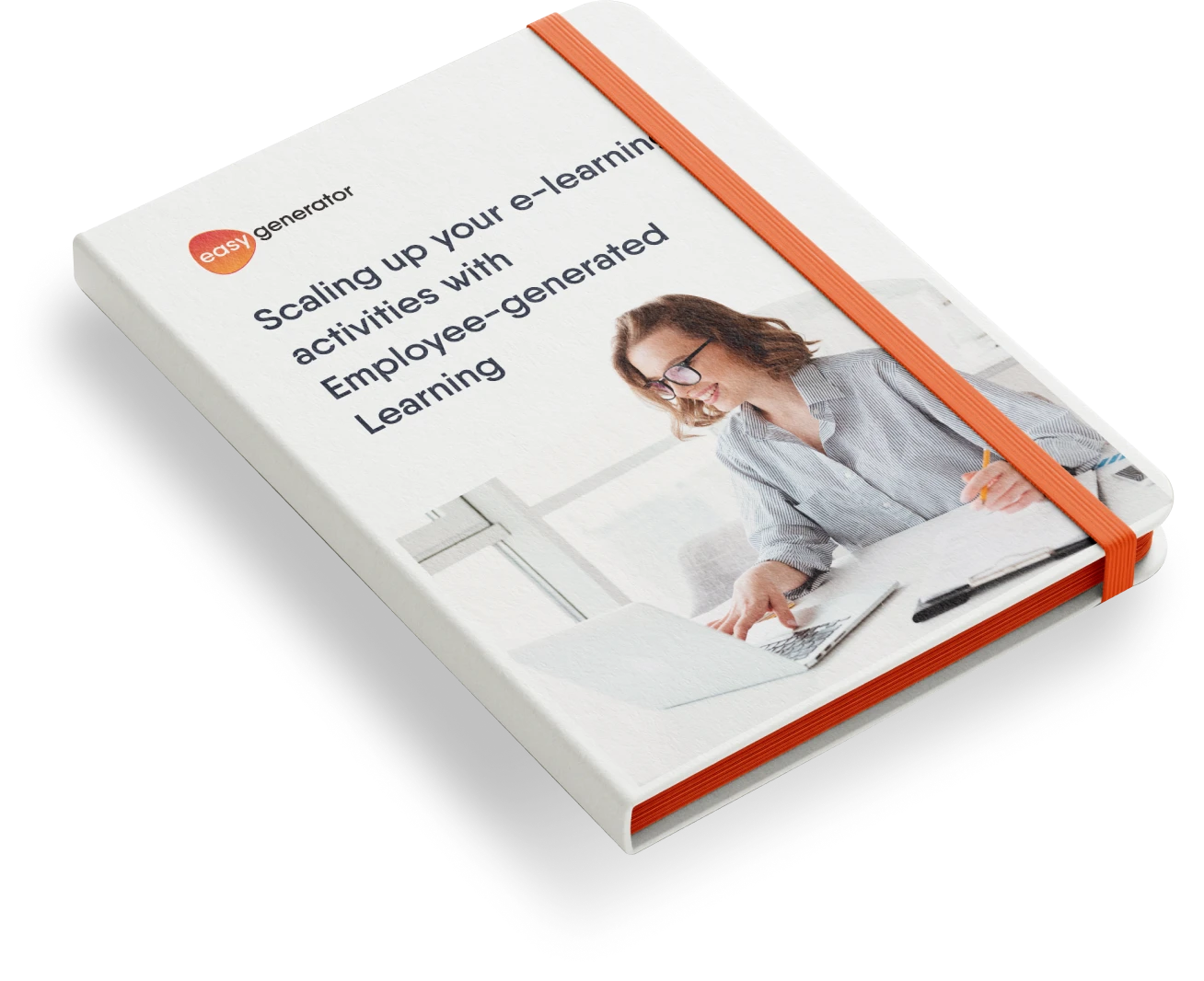6 steps to create effective microlearning courses
As microlearning continues to dominate as an e-learning trend, it’s important for businesses to keep up with best practices. We’ll show you the quick steps on how to create microlearning courses effectively for your employees.

What is microlearning content?
Imagine caring for a new plant you just got. You may know plants need water, but you might not know how much this species needs. Chances are, you’ll perform a quick Google search about your specific plant species and its unique needs. It’s unlikely that you’d enroll in an entire course about botany just to find that out. In other words, you’re more likely to benefit from microlearning content.
So, what is microlearning and what are the benefits?
Microlearning refers to learning content that’s delivered in short bursts, delivering specific pieces of information rather than broad subject overviews. It can come in various formats, including explainer videos, PDFs, courses, and infographics. The common denominator among these content types is that they should be brief and focused, allowing you to meet learning needs quickly and accurately.
Take a look at some microlearning examples to get inspired. And when you’re ready to start creating, check out the main microlearning features below to guide you in how to develop microlearning content.
6 steps to create microlearning content
If you’re ready to get started, here are some tips on how to develop effective microlearning content:
-
Know your learners
Clearly defining and understanding your audience should be the first step you take in the microlearning content development process. Identify which of your colleagues or team members will find your learning content useful and ask yourself relevant questions to determine how you should approach course creation: what do your learners already know or not know about the topic? How tech-savvy are they? Will they be looking to learn on-the-go (e.g. using a mobile device)? Answering these questions will ensure your microlearning content is tailored to your learners’ specific needs.
-
Set a single learning outcome
Like any e-learning content you create, it’s important to identify your intended learning objective before diving into the creation process. The difference in microlearning content development is that your learning objective should be singular – and the more specific the better. Knowing exactly what new knowledge or skills you want your learners to walk away with at the end of your course not only streamlines the creation process for you but also ensures you don’t include any irrelevant content.
-
Keep your content brief
Microlearning is, by definition, short. But how short should it be? Research has shown that effective microlearning content lasts between two and seven minutes. But because attention spans are on the decline, learners aren’t guaranteed to make it through the entirety of learning content, even if it’s just a few minutes long. With that in mind, when creating microlearning content it’s still worth making sure your learners can easily skim the content and develop clear takeaways. This is particularly useful if you use microlearning in soft skills training as your employees can immediately apply their learnings once they’ve completed their course.
-
Include relatable examples
When diving into an unfamiliar subject, learners benefit from having examples they can relate to and draw conclusions from. To ensure the examples you include are relatable, consider real-world scenarios that learners are likely to encounter on the job. This not only helps them apply their learnings to their own experiences but can also strengthen their knowledge retention.
-
Apply an active and relatable tone
Employing a conversational tone that communicates in the same way learners do in their everyday lives can also improve relatability. When developing microlearning content, use an active voice ensures your content gets the point across quickly, allowing your learners to form conclusions and close their knowledge gaps faster.
-
Keep it engaging
Keeping content short and specific isn’t enough to make sure learners stay focused. Consider balancing text out with engaging visuals or interactive elements. You could also deliver your content in an engaging format altogether. For example, videos create a multisensory learning experience (visually and audibly), which can also improve learner retention rates.
E-learning authoring tool features you need to create microlearning content
To help you keep up with your learners’ needs for short and effective content, it’s important to optimize your own content creation process accordingly. Here are the key features we recommend you look out for when using an e-learning authoring tool to create microlearning content:
-
User-friendly interface
A complex authoring tool can slow you down, causing you to spend more time than needed learning to use the tool before you can finally create your content. An authoring tool with a user-friendly interface is key to getting you started. Easygenerator’s drag-and-drop course creator, for instance, makes it easy for anyone to create content regardless of their professional background.
-
Cloud-based tools
A cloud-based authoring tool allows you to access your content from any device that’s connected to the internet. This may be especially convenient today as more people work remotely. For example, if you started creating a course on a device at the office, you’ll be able to continue the process at home. Not being limited to one location or device allows you to speed up content production and keep up with on-the-job learning needs.
-
Multimedia elements
As mentioned earlier, multimedia elements make for a more engaging learning experience. Look for features in your authoring tool that allow you to include images, infographics, or videos, whether by linking, uploading, or embedding your files.
-
Interactive elements
Similarly, creating opportunities for learners to interact with the learning content and make decisions based on their newly acquired knowledge makes for an engaging experience. Interactive learning also improves learner retention rates.
-
Easy content maintenance
In a business, the need to update learning content over time is inevitable. That’s why you’ll also need an authoring tool that easily allows you to make changes to your content from time to time. This will prevent the hassle of having to create a whole new course on the same subject from scratch, saving you both time and money in the long run.
Check out our customer story about how microlearning helps save huge costs.
Easygenerator provides all these features and more, allowing you to create microlearning content smoothly. Using our cloud-based and user-friendly authoring tool, anyone can get started. With the ability to make changes to your content anytime without having to re-share it with your learners, you’ll also ensure your content stays relevant over time.





